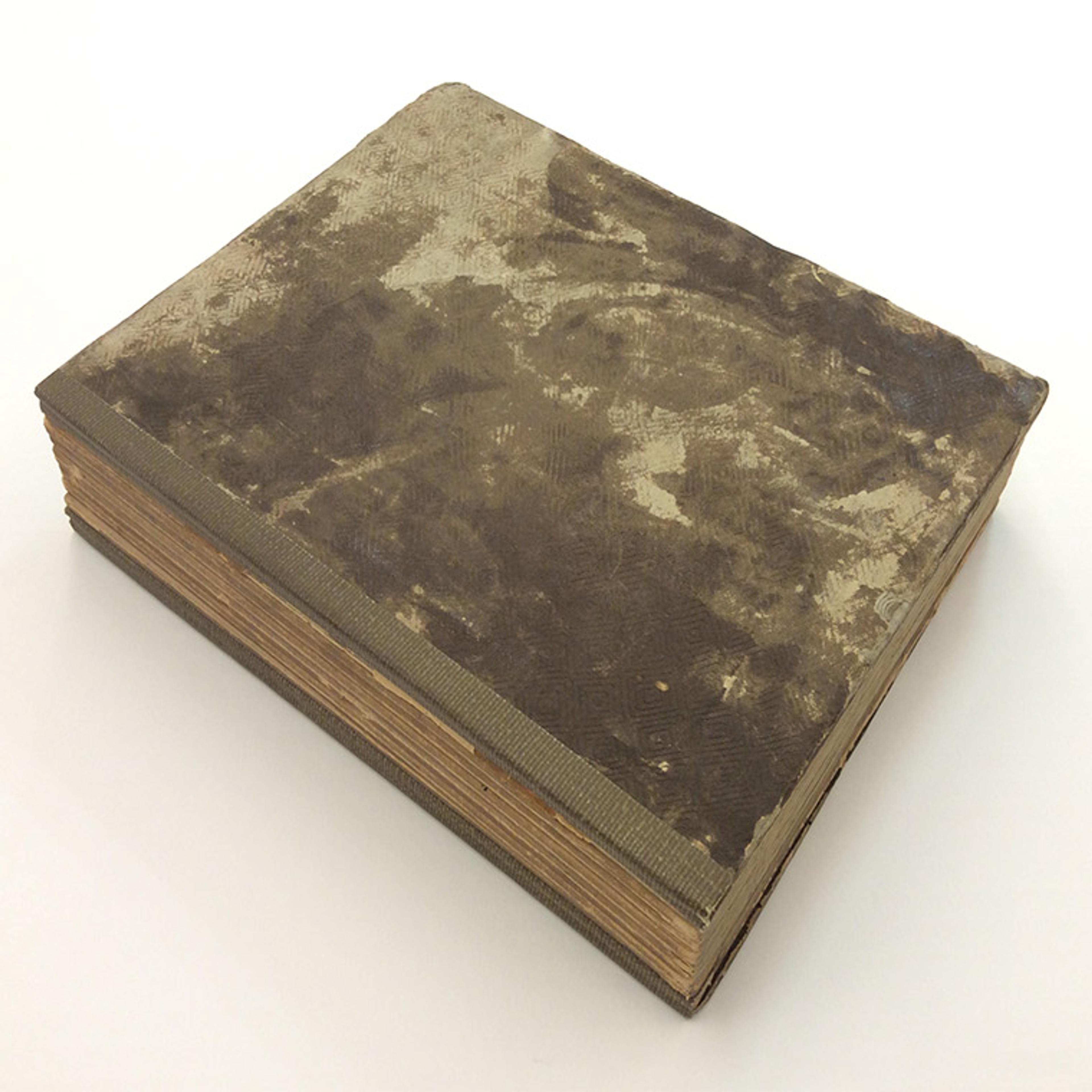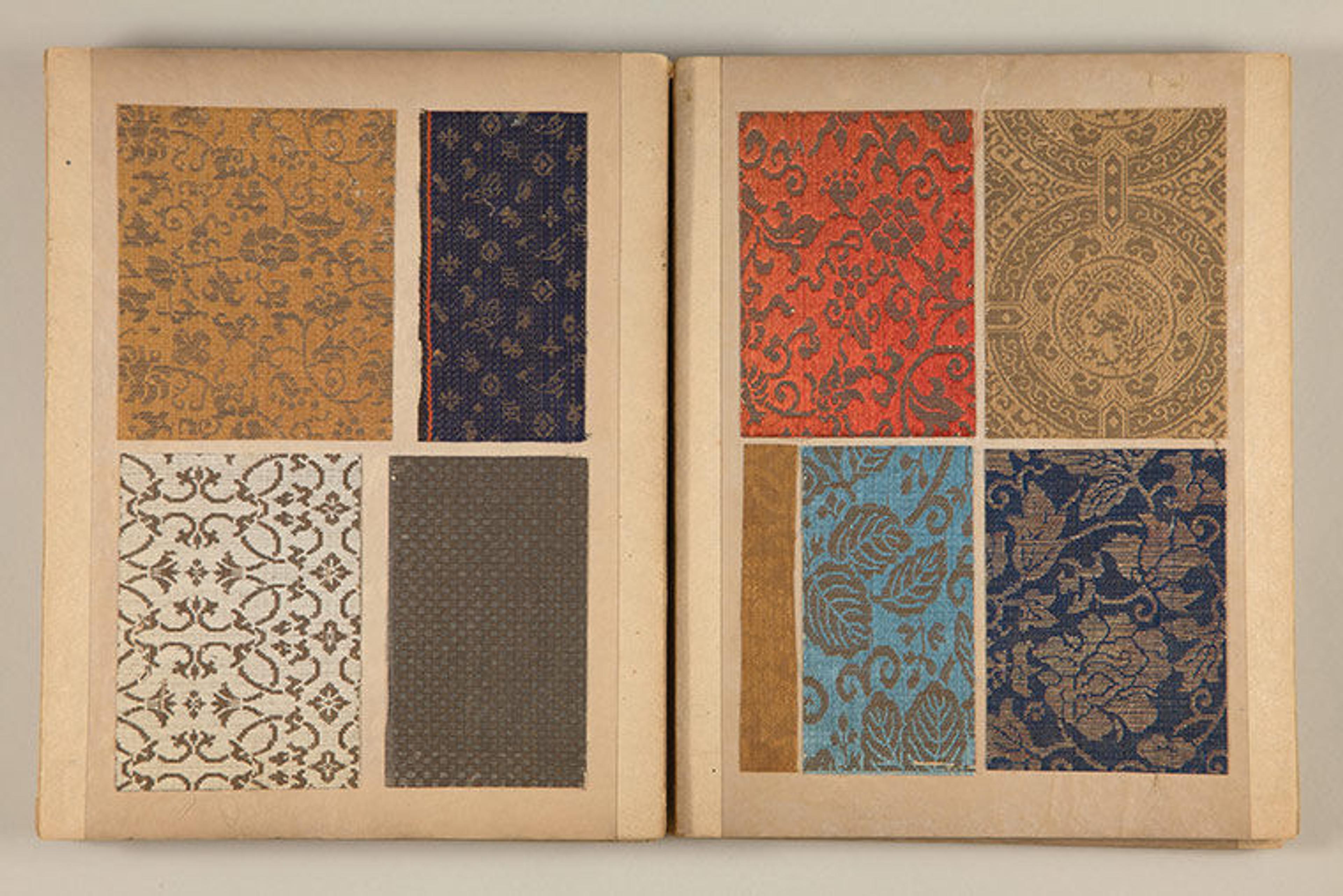
Examples of textiles woven with gold thread from the book Japanese Textiles
Thomas J. Watson Library has a significant collection of sample books dating from the mid-nineteenth century to the present that contain a variety of materials, including glass, wood, paper, fabric, and photographs. Mounting these samples on paper and binding them into books allowed for convenient, portable promotion of these materials. Various structures were employed in their production, enabling the contents to be clearly seen and touched. These include screw-post, ledger, case, and concertina bindings.
While sample books were primarily produced as marketing tools, they were also meant to transmit knowledge about a craft. In addition, they were created by craftsmen to document their tools and techniques. Today, as primary source materials, sample books contain an incredible wealth of research information. In this blog post, I will look into three Asian textile sample books from our Special Collections that demonstrate the diversity, beauty, and significance of textile sample books.
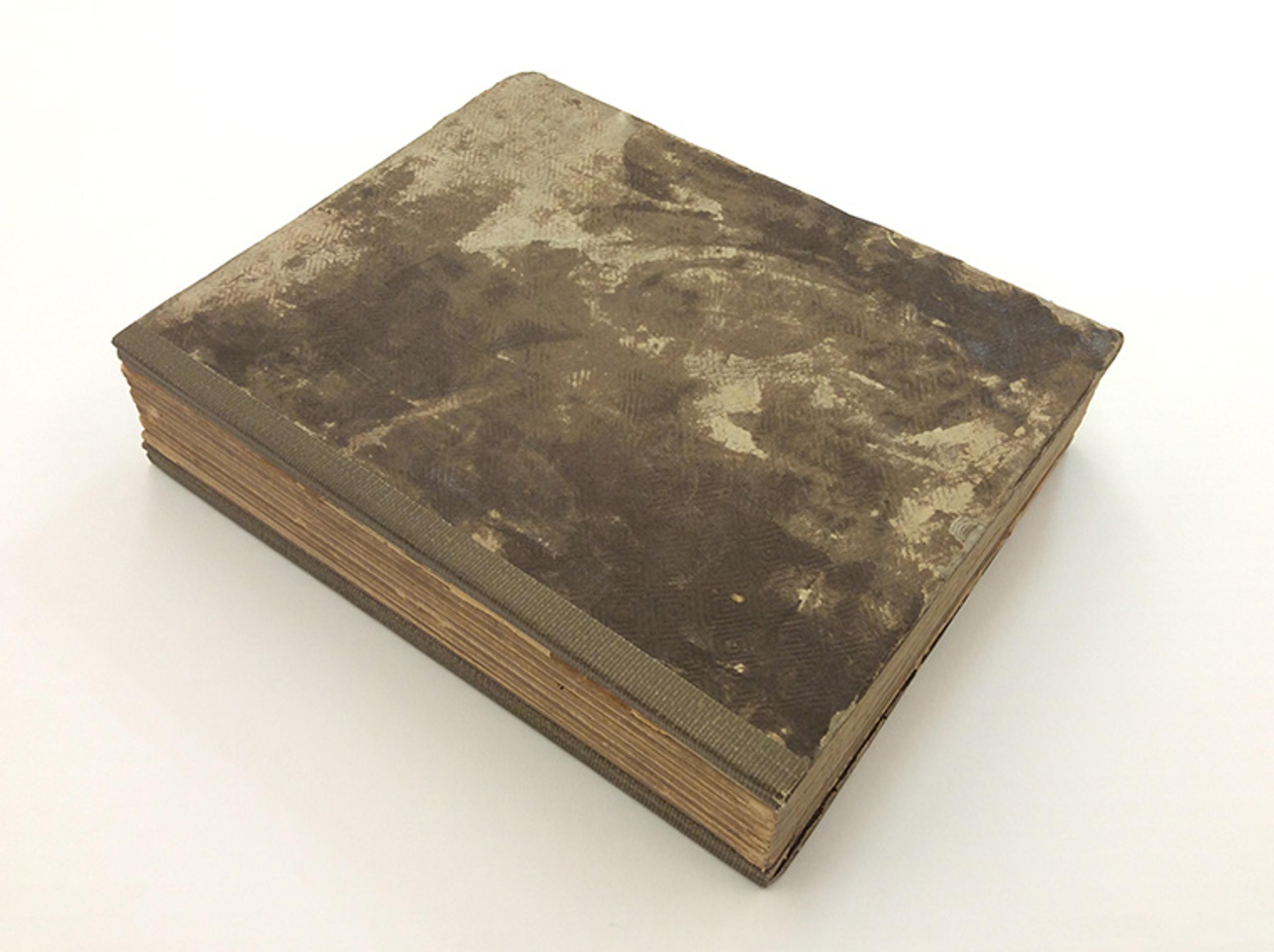
The cover of Japanese Textiles, a sample book from the 1920s. This Watson Library copy was a gift of Edward C. Moore.
Referred to as Japanese Textiles, the accordion book pictured above was a gift from Edward C. Moore. While the exact date of its production is unknown, the book was made before 1890. Orihon (also known as accordion or concertina binding) is a structure first developed in China and used subsequently in Japan, primarily for Buddhist texts. It was usually made by repeatedly folding a single sheet of paper that was attached on each end to a board that became the front and back cover of the book. The text block of Japanese Textiles consists of fourteen single boards hinged together with Japanese paper. All of the pages and hinges were decorated with mica, a silicate mineral that adds a speckled golden sheen to the blank areas of the page.
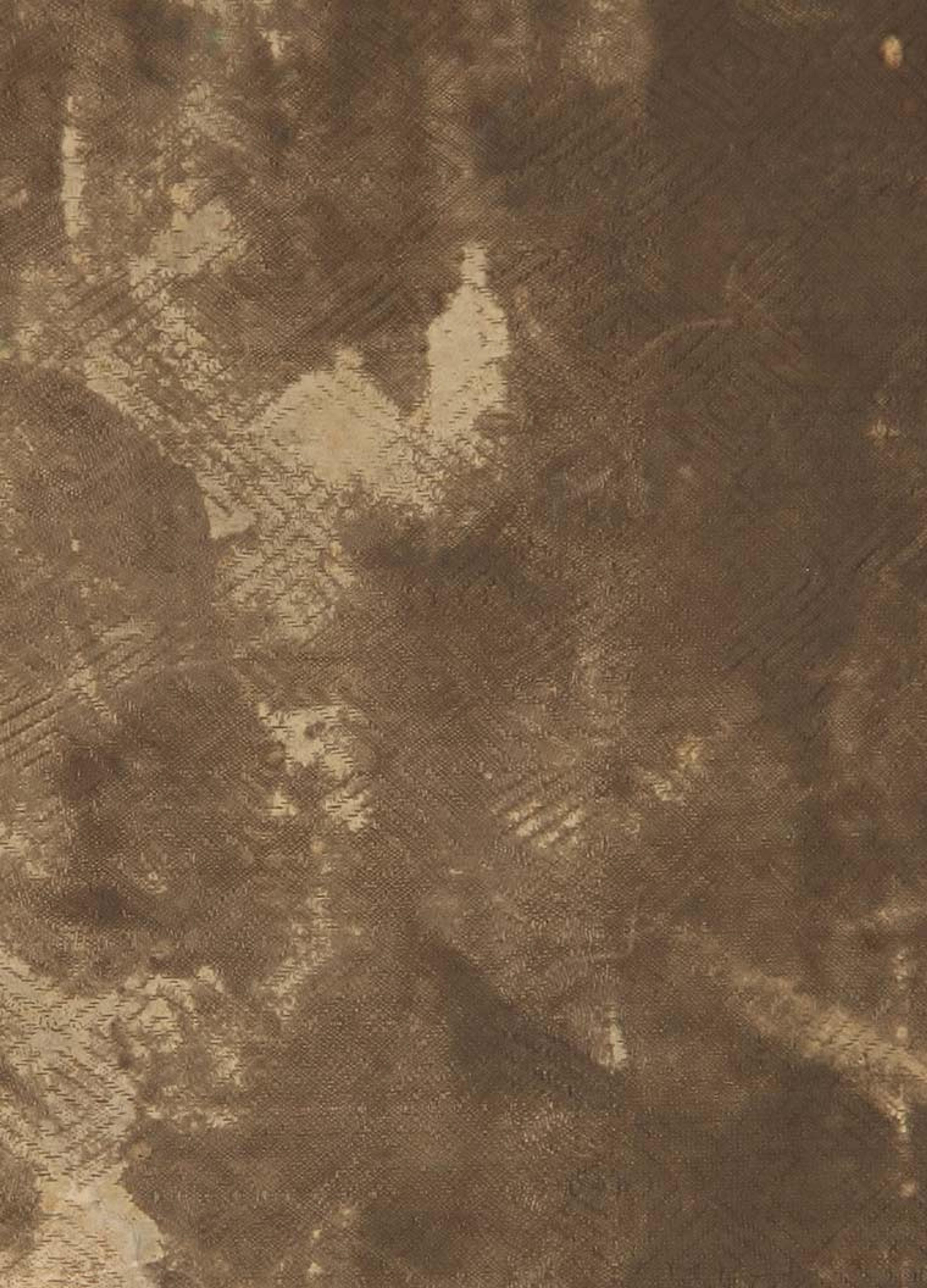
Detail of the cover of Japanese Textiles showing an embossed silk pattern
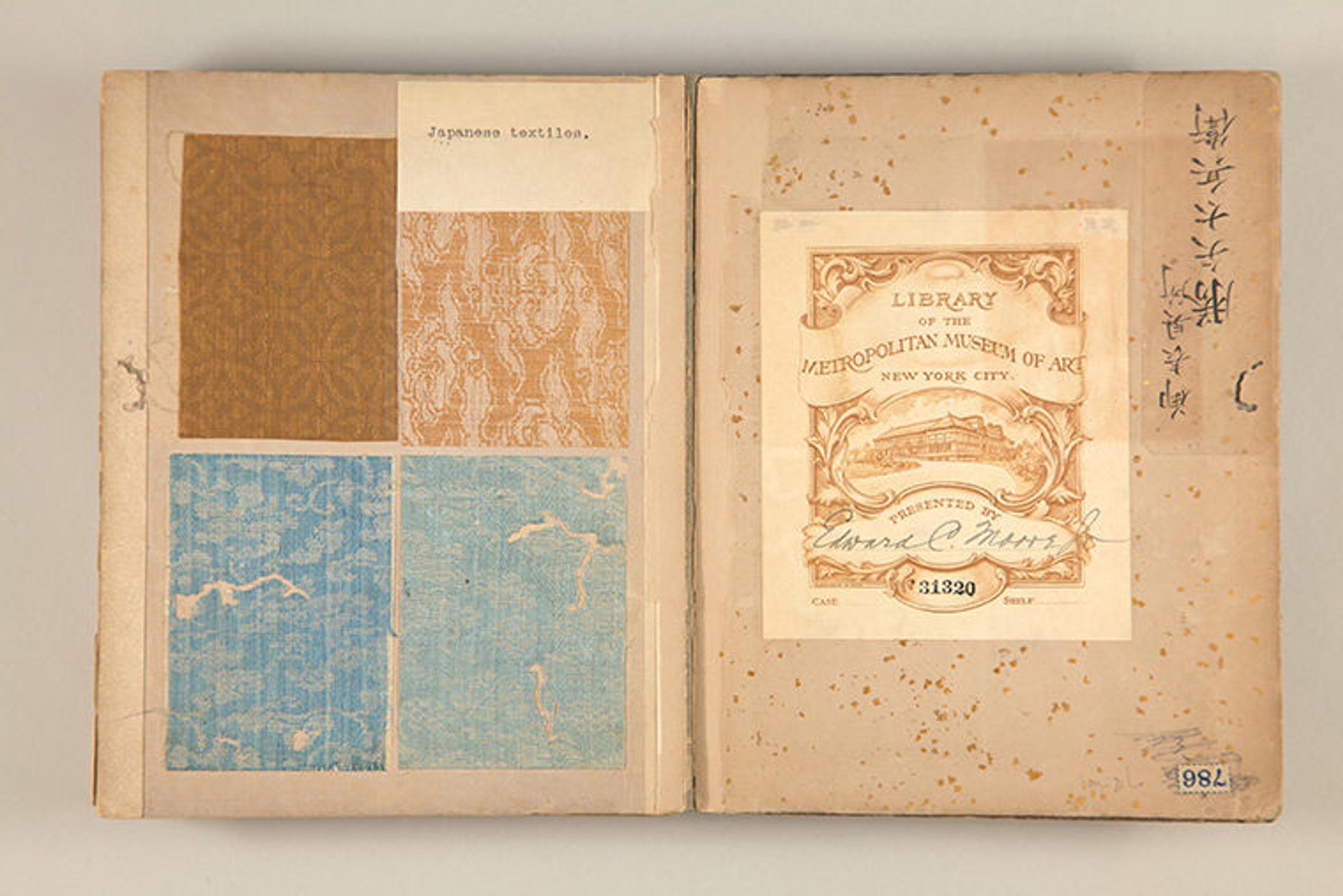
All of the pages of Japanese Textiles are decorated with mica
Upon close examination, there is evidence of heavy use, suggested by multiple repairs, abraded edges and corners, fading of the cover cloth, and the overall distressed condition of the book. As a result of abrasion, the fine brown silk cover has faded.
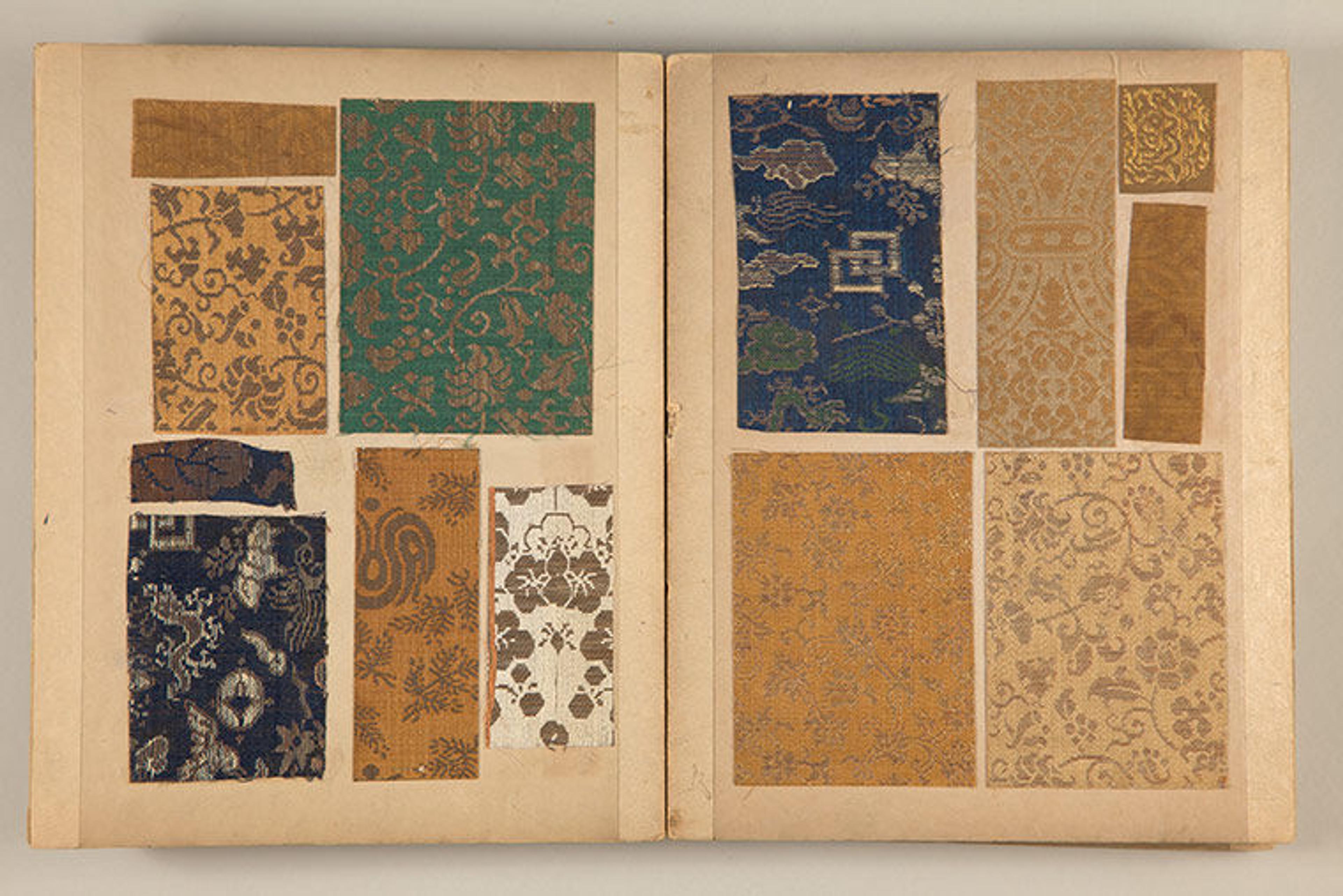
Examples of textiles woven with gold thread inside Japanese Textiles
The accordion structure of the Japanese Textiles allows us to see either side of the book because they are mounted on the front and back of the boards. Based on the thickness and patterns of the samples, the textiles were used for mounting hanging scrolls. The book could have belonged to an individual scroll maker or studio and used as a personal record or a commercial reference guide. While little is known about this sample book, it is certain that these beautiful, thin, woven silks, with their extraordinary motifs, metallic threads, and metallic leaf applications, are remarkable samples of cloth.
Another Japanese textile sample book is Nippon Hand Weaves in Kusakizome Dyes, published in 1959 by Akira Yamazaki. Unlike the Japanese Textile book, this book contains detailed information about its function and maker's intentions. It is a collection of twenty-six plant-dyed, handwoven textiles that were specifically made for this book and created, as the author states in the introduction, to "transmit the wealth of the past." This elegant structure contains information about each cloth sample and plant used in the dyeing process and also about the materials used in the construction of the book.
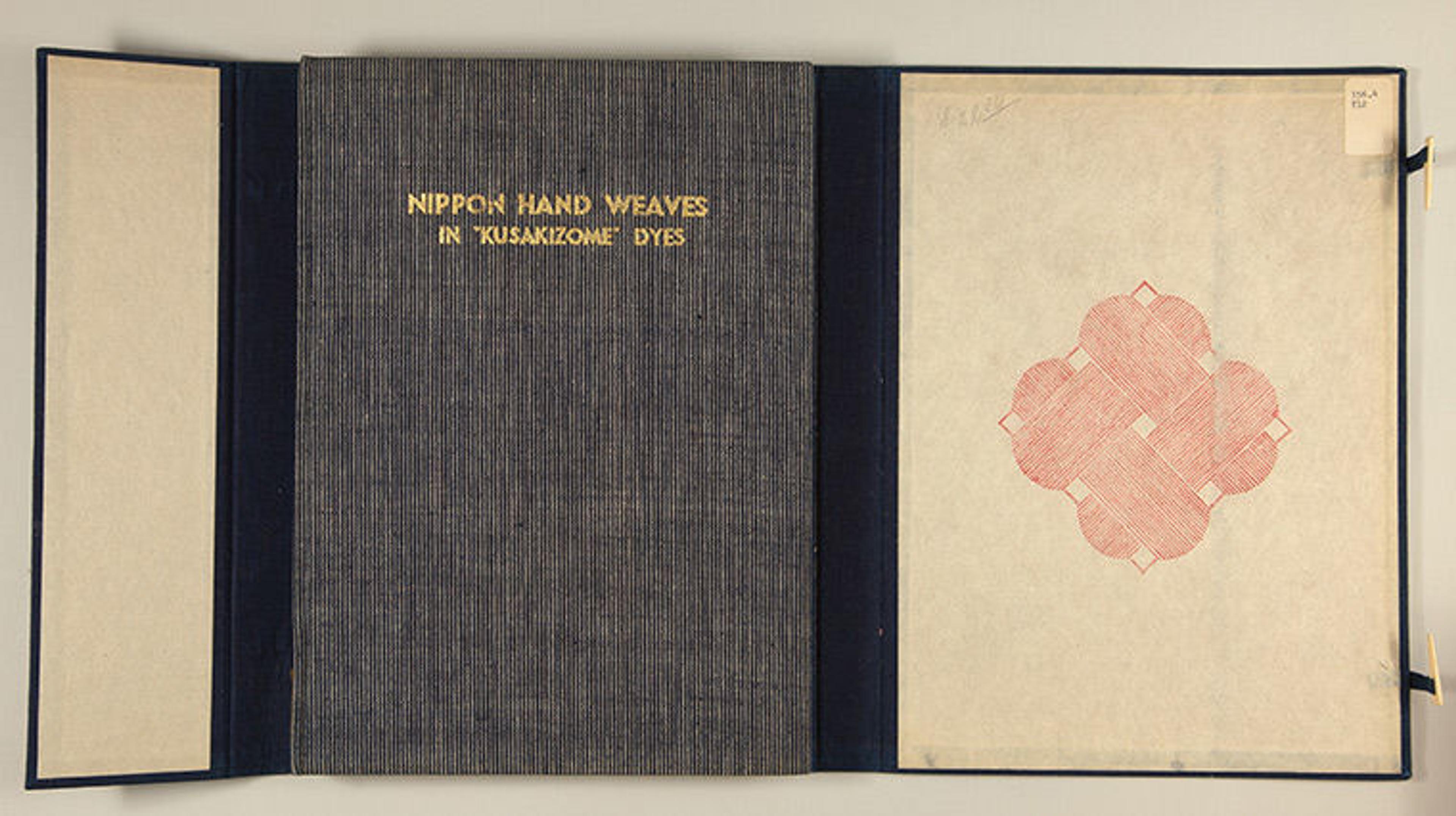
Akira Yamazaki, Nippon Hand Weaves in Kusakizome Dyes (Kawasaki: Getsumeikai, 1959). This copy is a gift of the Friends of the Thomas J. Watson Library.
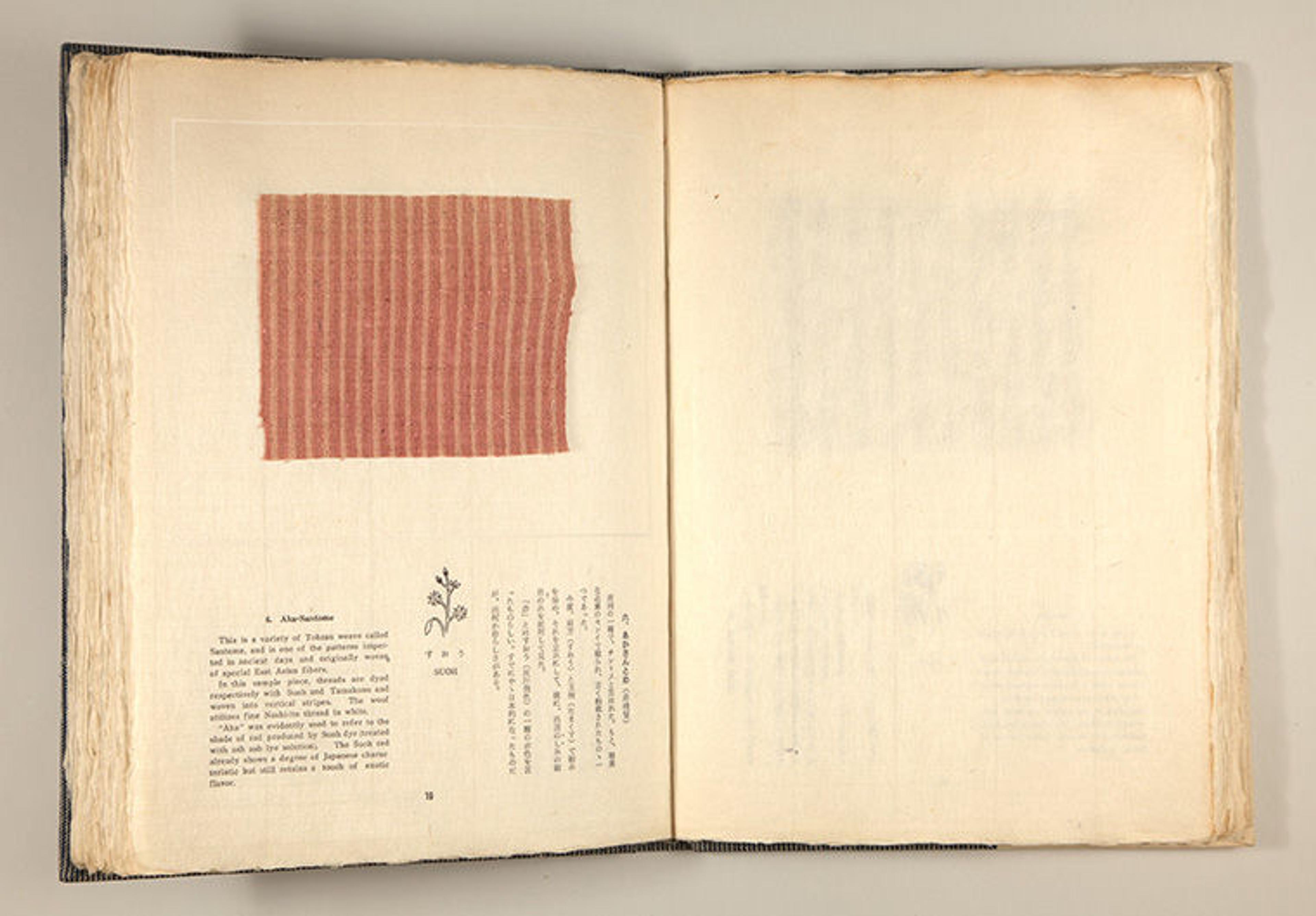
A sample from Nippon Hand Weaves in Kusakizome Dyes with descriptions in Japanese and English
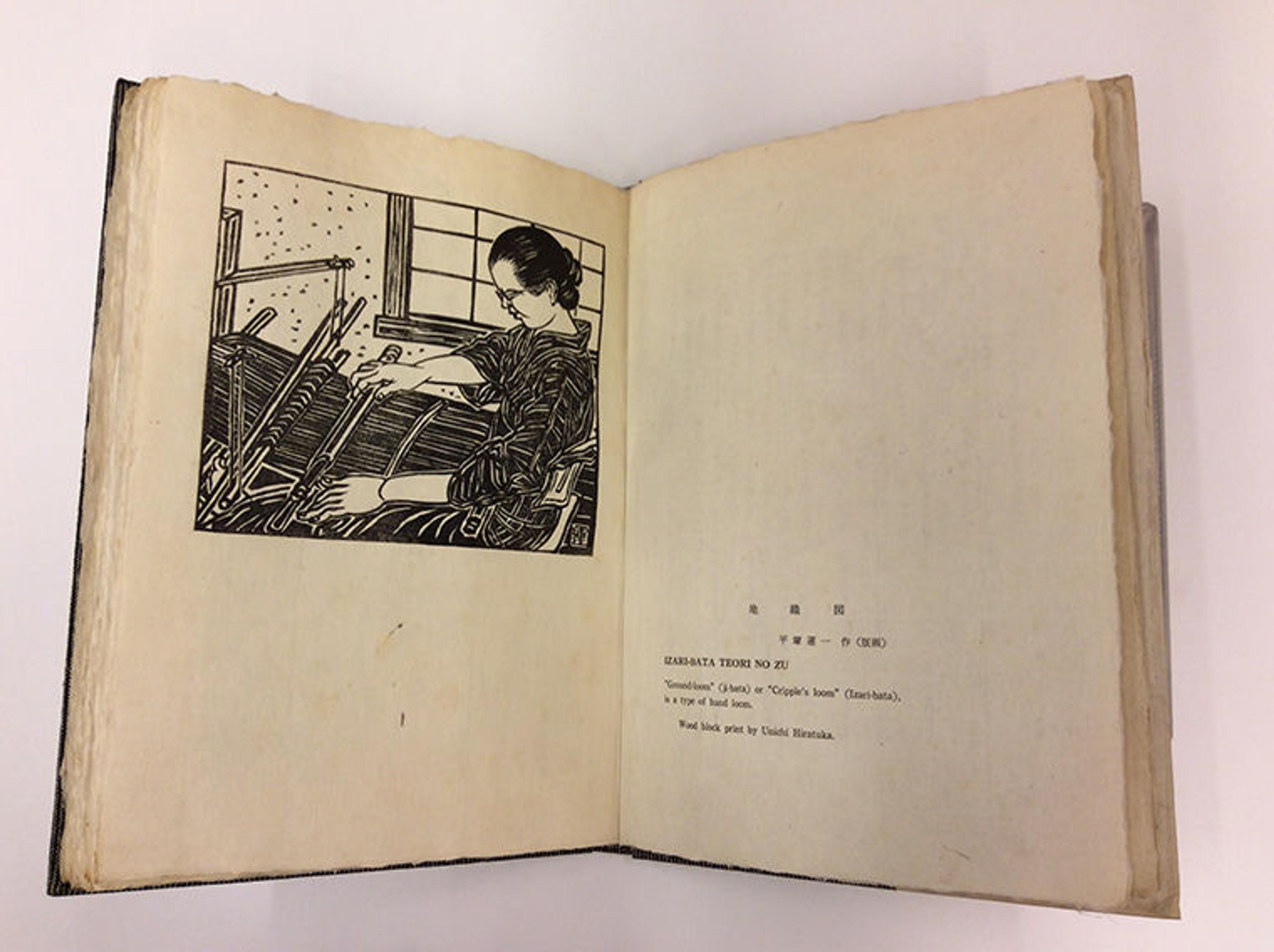
Nippon Hand Weaves in Kusakizome Dyes. This woodblock print by Unichi Hiratuka shows the type of hand loom used for weaving the cloth included in this book.
Visually and structurally, the book combines elements of Western and Eastern book structures. The publisher chose a Western, flat-back case binding, combined with a typically Japanese-style, short-sleeved, wrap-around case with bone clasps. Contrary to expectations, its thick cover boards are extremely lightweight. The covering material of the book and case is handwoven Tsumugi cotton, dyed with indigo. The textblock is made of handmade, heavyweight Getsumei paper, gathered and sewn in sections. The thickness and flexibility of the Getsumei paper enable it to withstand additional weight and handling, making it a suitable mounting surface for cotton samples. A single textile sample is tipped onto each page, opening with descriptions in Japanese and English.
The textile sample book Balai Penelitian Batik, which has an unknown date of production, was created by the Ministry of the Industry of People of Jogjakarta and Batik Research Center. Unlike the two other books presented here, this is a manual that leads the viewer through steps in batik production, in both English and Indonesian. Each page contains a sample of treated cloth, a brief description of the process, and an illustrative photograph. The book is bound in an album style made up of individual pages, with hinged, cloth-covered boards that are bound or tied together with a silk cord. This constrained structure has limited openability and it is intact only because of minimal past use.
The information in the introduction does not explain the institution's intention in creating this manual. However, this publication clearly captures the complex, time-consuming process of batik production and educates readers through didactic samples that illustrate the wax-resist dyeing technique with copper stamps. Descriptions are brief and factual, and samples are the focal point of the page. The viewer is invited, through nine consecutive cloth samples, to see and feel the transformation of pure starched white cloth into a finished batik design, a sample of which is adhered to the front cover of the book.
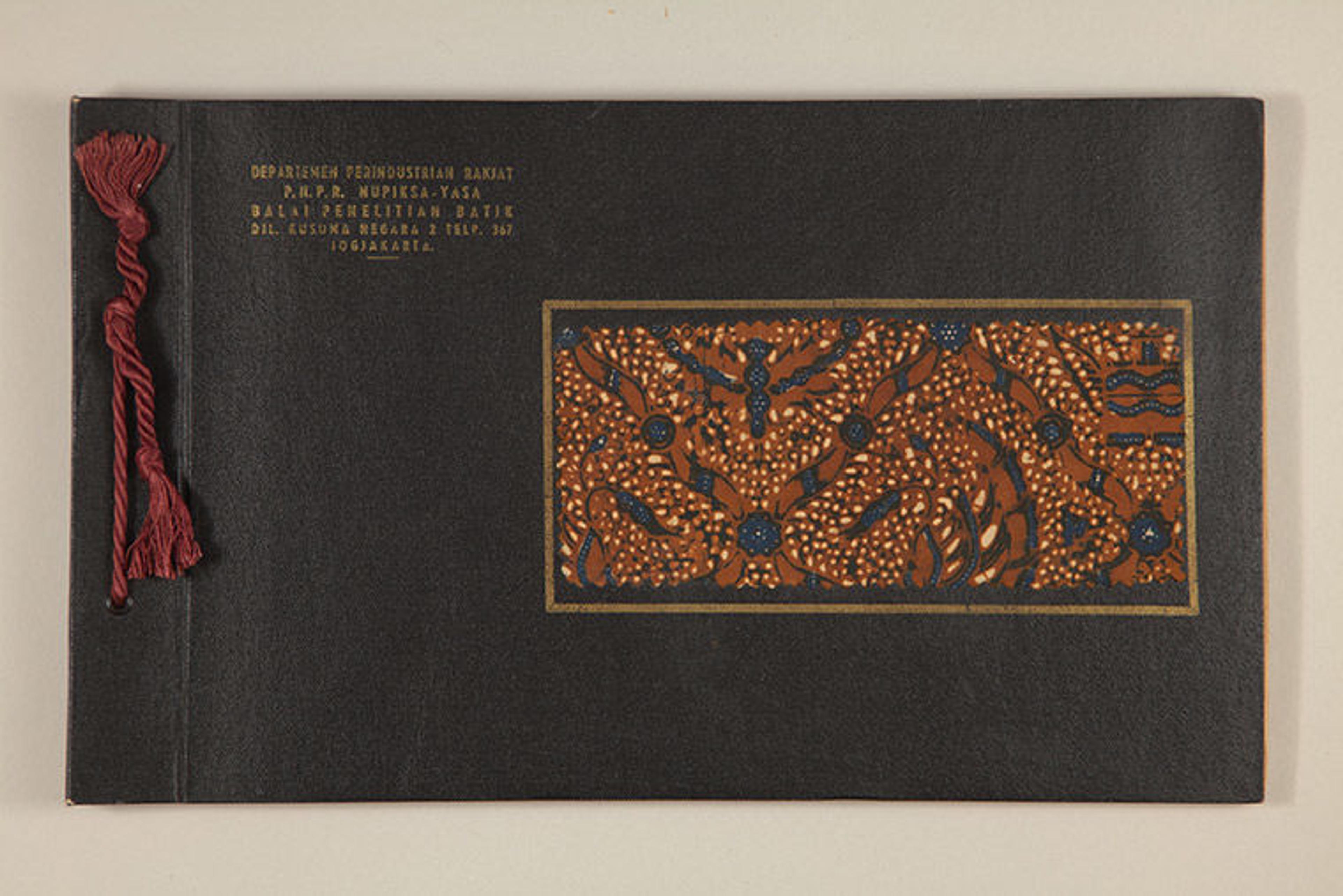
Balai Penelitian Batik (Jogjakarta, [Java, Indonesia]: Departemen Perindustrian Rakjat, 1900s). The front cover has a sample of batik cloth, the production of which is demonstrated in this manual.
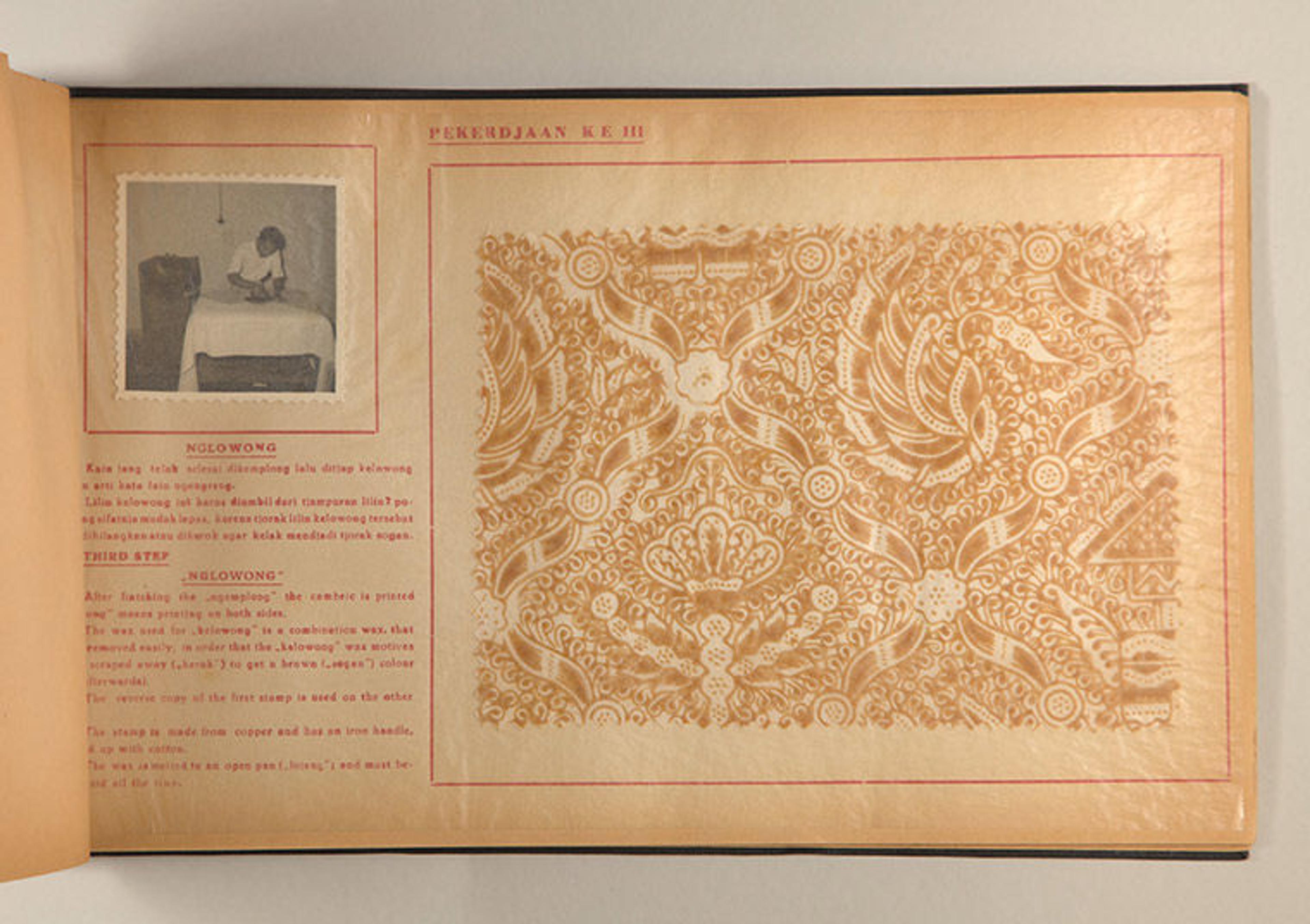
The photograph on the left demonstrates the process of stamping wax with a copper stamp before submerging it into a vat of indigo.
The makers of these beautiful sample books devoted thought and care to their creations, which resulted in visually and mechanically adequate bindings for their contents that were meant to promote, educate, sell, and transmit knowledge by sight and touch. Because these structures often fail as a result of unsuitable production materials and heavy handling, they present a special challenge in preservation and conservation. We encourage our users to practice good handling skills illustrated in our handling video to help us preserve these irreplaceable resources.
